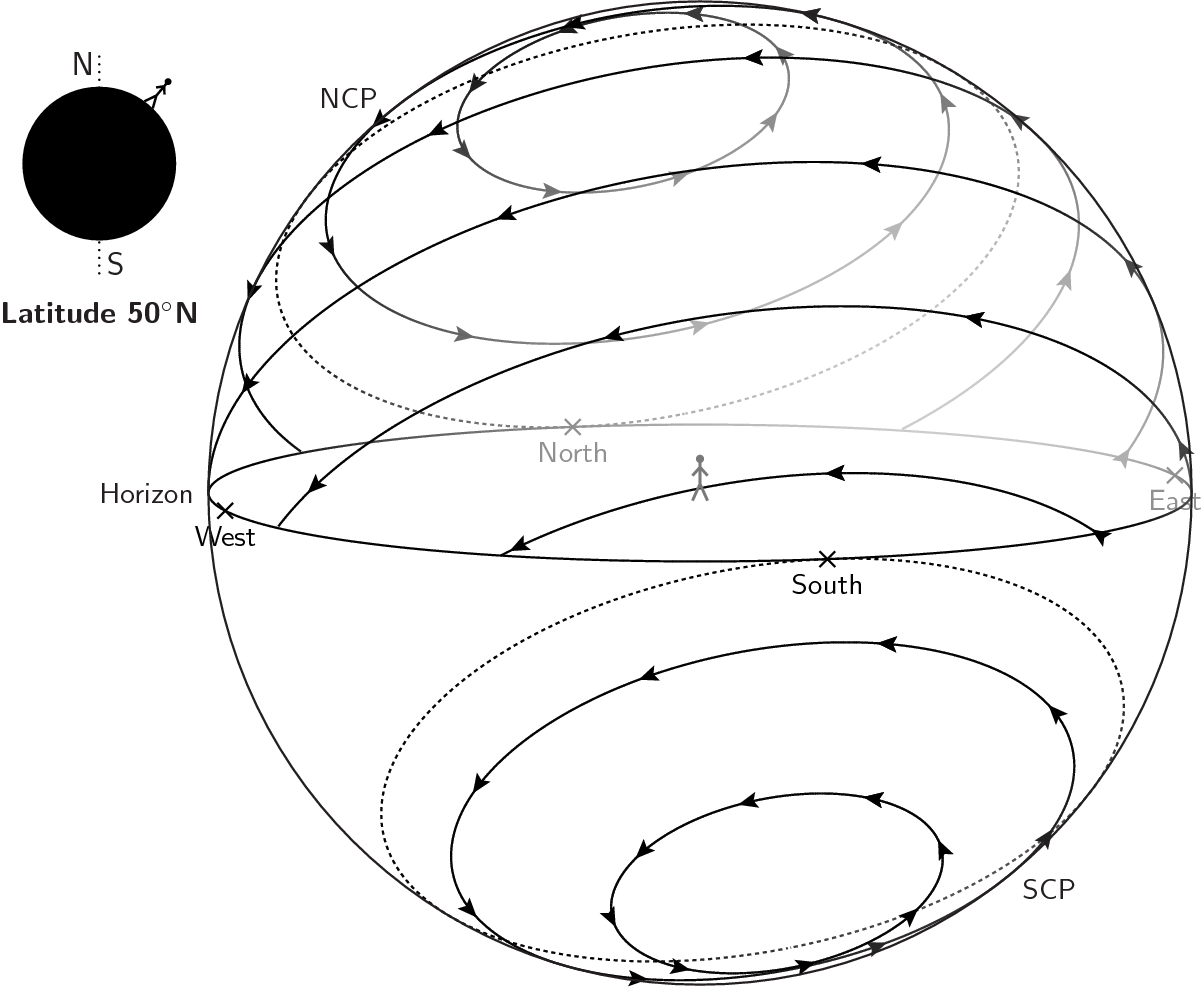Circumpolar
An object is said to circumpolar if it is so close to one of the celestial poles that it never sinks below the observer's horizon.
As the night sky rotates around the celestial poles (labelled NCP and SCP in the diagram to the right), most objects rise above the eastern horizon, and set along the western horizon.
However, objects which are close to the celestial poles either remain permanently above the horizon, if they are in the same hemisphere as the observer, or never rise above the horizon at all, if they are in the opposite hemisphere to the observer.
In the northern hemisphere, objects will be circumpolar if they lie within an angle equal to the observer's latitude of the north celestial pole. So, if you live at a latitude of 50°N, any object which lies within 50° of the north celestial pole will be circumpolar. Specifically, this means objects with declination greater than 40°N.
In the southern hemisphere, similar logic applies around the south celestial pole. So, if you live at a latitude of 35°S, any object which lies within 35° of the south celestial pole will be circumpolar. This means objects with declination below -55°.
At the north pole, all objects in the northern sky appear circumpolar, while at the equator, no objects are circumpolar.
